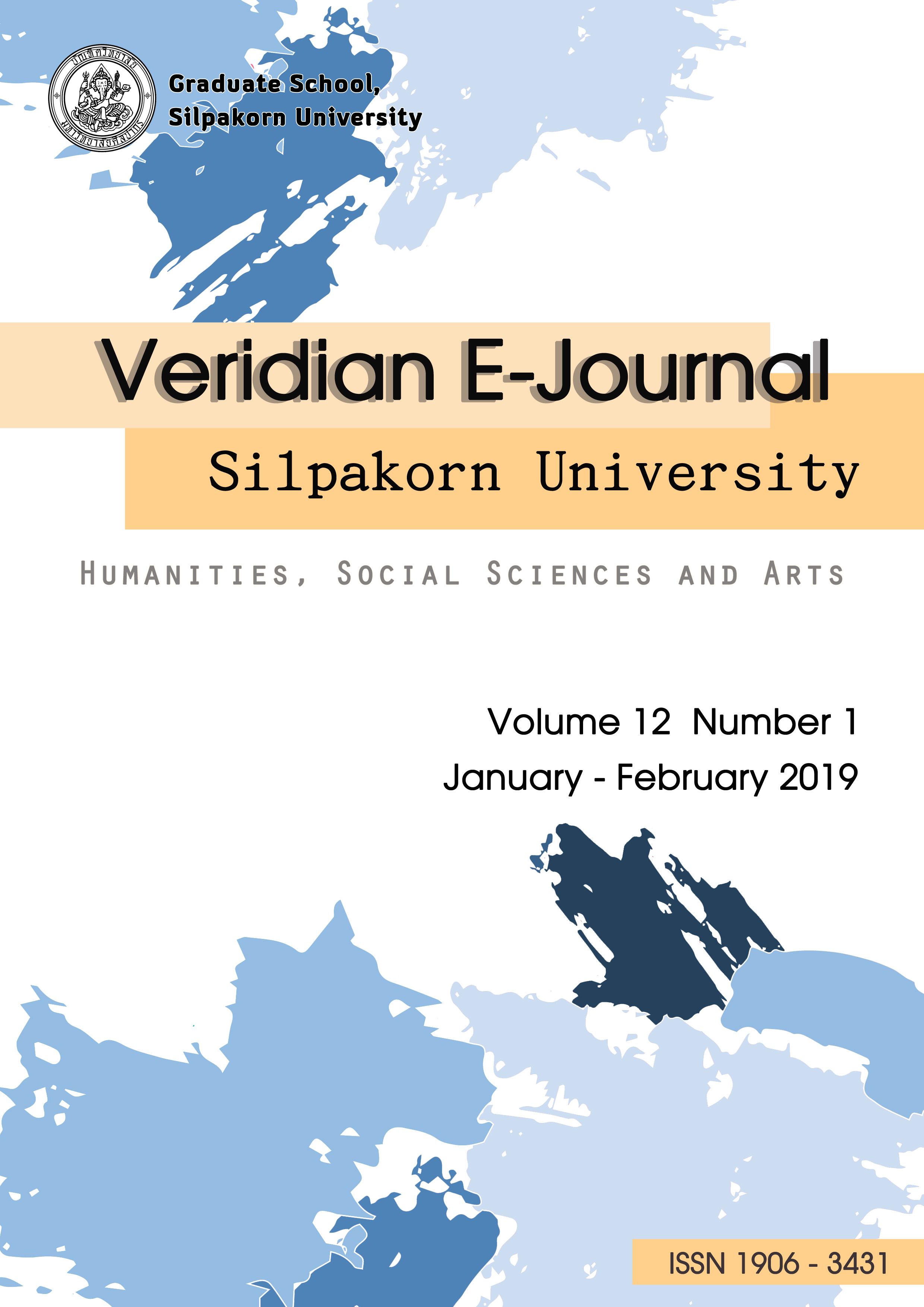ชุดหลักฐานเครื่องมือหิน ‘โหบินเนียน’ กับการเลือกใช้วัตถุดิบหิน: กรณีศึกษาจากแหล่งโบราณคดีเพิงผาถ้ำลอด อำเภอปางมะผ้า จังหวัดแม่ฮ่องสอน (Hoabinhian assemblages and raw material selection: A case study of Tham Lod Rockshelter, Pang Mapha District, Mae Hong Son Province) กรณีศึกษาจากแหล่งโบราณคดีเพิงผาถ้ำลอด อำเภอปางมะผ้า จังหวัดแม่ฮ่องสอน
Main Article Content
บทคัดย่อ
ความชำนาญเชิงหัตถกรรมที่เด่นชัดของมนุษย์ยุคแรกเริ่มในภูมิภาคเอเชียตะวันออกเฉียงใต้คือการเลือก และการคัดสรร “ก้อนหิน” มาทำเครื่องมือเครื่องใช้ โดยมีเทคนิคและวิธีการกะเทาะก้อนหินให้เกิดรูปร่างรูปทรงที่เหมาะสมกับการใช้งาน สอดคล้องกับการดำรงชีวิต เหมาะสมกับสิ่งแวดล้อมแต่ละพื้นที่อยู่อาศัย ดังนั้น ด้วยความชำนาญ ความคล้องจองและความเหมาะเจาะกันระหว่าง วัตถุดิบ เทคนิค และวิธีการกะเทาะ มนุษย์ยุคแรกของภูมิภาคเอเชียตะวันออกเฉียงใต้จึงคิดทำเครื่องมือหิน ‘โหบินเนียน’ อย่างสร้างสรรค์เมื่อราว 35,000 - 12,000 ปีมาแล้ว ช่วงระยะเวลานี้ นักโบราณคดีได้กำหนดให้เป็นช่วงรอยต่อระหว่างสมัยหินเก่า ตอนปลายและสมัยหินใหม่ โดยพบว่าการเกิดขึ้นของชุดเครื่องมือหินแบบโหบินเนียนของแต่ละพื้นที่ในภูมิภาคเอเชียตะวันออกเฉียงใต้ในช่วงระยะดังกล่าวนี้คนโบราณใช้ทรัพยากรหินในท้องถิ่น ไม่ใช้หินจากภายนอก ยังคงมีรูปแบบของชุดเครื่องมือหินโหบินเนียนที่เป็นบรรทัดฐานและอุดมการณ์เดียวกันทั่วภูมิภาค จุดประสงค์ของบทความนี้เพื่อศึกษาหาความสัมพันธ์ระหว่างรูปแบบของเครื่องมือหินกับวัตถุดิบจากตัวอย่างในแหล่งโบราณคดีเพิงผาถ้ำลอด โดยใช้แนวคิด Chaîne opératoire (operational chain or operational sequence approach) เพื่อใช้อธิบายเกี่ยวกับรูปแบบของเครื่องมือหินและการเลือกวัตถุดิบ ผลการศึกษาในครั้งนี้พบว่าคนสมัยก่อนประวัติศาสตร์ที่เพิงผาถ้ำลอดที่มีวิถีชีวิตแบบล่าสัตว์-หาของป่า เลือกหินวัตถุดิบ 14 ชนิด ไม่ว่าจะเป็นกลุ่มหินอัคนี หินชั้น หรือหินแปร โดยเฉพาะอย่างยิ่งใช้หินทรายเป็นวัตถุดิบหลักเนื่องจากหาได้ง่าย นำมาใช้ทำเครื่องมือหินได้เกือบทุกประเภท และพบว่าหินทรายที่ถูกนำมาใช้ทำเครื่องมือหินเหล่านี้ มีคุณลักษณะที่ดี มีความเหมาะสม ทั้งความแข็ง และความเหนียว ง่ายต่อการกะเทาะ ยังพบอีกว่าหินวัตถุดิบทั้ง 14 ชนิด ขวานสั้นทำจากหิน 8 ชนิด เครื่องมือตัดทำจากหิน ๗ ชนิด เครื่องมือสับ เครื่องมือขูด และสุมาตราลิธ ทำจากหิน 6 ชนิดโดยภาพรวมแสดงให้เห็นว่าคนก่อนประวัติศาสตร์ที่เพิงผาถ้ำลอดมีความเข้าใจและรู้จักเลือกใช้ทรัพยากรหินในท้องถิ่นให้เหมาะสมกับเทคนิคการผลิตเครื่องมือหินแต่ละประเภทเป็นอย่างดี
Knowledge of craft specialization of early humans in Southeast Asian region is to understand how they selected and chose pebbles for making tools by using technique and method to knap pebble in proper shape which is suitable for use related to their subsistence and habitat. According to available data, the specialization and appropriateness between raw material, technique and tool flaking, people in Southeast Asia creatively made ‘Hoabinhian’ tools approximately 35,000 - 12,000 years ago. During the period, archaeologists determine that it is the transition between the Palaeolithic and Neolithic periods. The appearance of ‘Hoabinhian’ assemblages in Southeast Asia demonstrates local lithic raw material usage that shared a similar norm and ideology over the region. This paper aims to study the relationship between stone tool types and raw materials from Tham Lod Rockshelter by using Chaîne opératoire perspective (operational chain or operational sequence approach) to explain how stone tool types and raw material selection is related. The result demonstrates that hunter-gatherers of the prehistoric period who lived at Tham Lod Rockshelter used fourteen types of stone of three rocks (igneous, sedimentary and metamorphic) and particularly, sandstone that was easily available was mainly used a raw material for making almost types of stone tools. Because of sandstone’s appropriate property, pebble tools of all sizes and shapes could be easily produced. It is found that of fourteen types of stone, eight types of them were used to make Short-axe tools, seven for Chopping tools, six for Chopper, scraper and Sumatralith tools. This is suggested that the prehistoric men at Tham Lod gained insight into the making of lithic tools by using local raw material.

